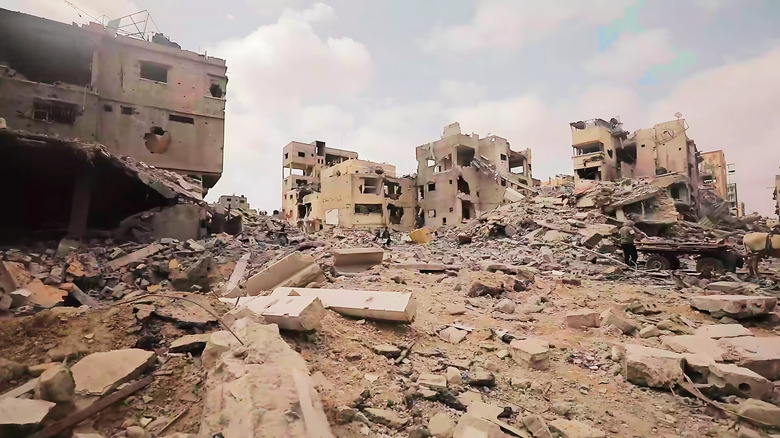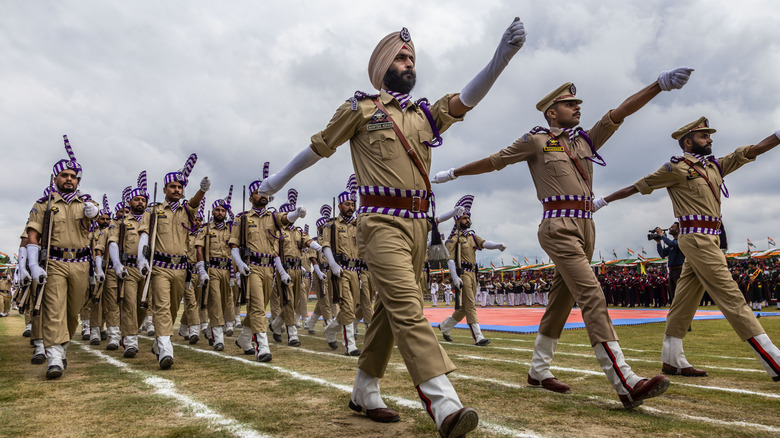Why Tourists Still Willingly Travel To High-Risk Destinations Even When Strongly Advised Not To
From the gas chambers of Auschwitz to Japan's Aokigahara, the "Suicide Forest," the world is full of harrowing places that tourists love to visit. Called thanatourism, better known as "dark tourism," this inclination to travel to places associated with death and suffering appeals to something deep within us, like when a car crashes and you find it difficult to look away. Usually, these kinds of destinations are haunted by past events, but a riskier form of the pastime is also booming: visiting modern conflict zones.
According to FTN, the number of long-term visitors to Israel doubled in 2024, the year after it began its war with Hamas. Many were members of the Jewish diaspora moving to be with family, undeterred by the attendant dangers. Tourists are still traveling to places like Syria, Afghanistan, Somalia, and Kashmir, where under-the-surface tensions could boil over at any moment. Polish filmmaker Vita Maria Drygas even discovered adverts for "frontline tours" in Ukraine's war-ravaged Donbas region in 2014.
Some of the most dangerous cities in the world, based on homicide rates per capita, don't just have robust tourism infrastructure but are practically synonymous with it. In Mexico's Tijuana and Acapulco, gang shootings are nearly as commonplace as beach-bound vacationers. South Africa is one of the world's top travel destinations, despite gun crime and kidnappings making it also one of the most dangerous. While U.S. State Department warnings haven't discouraged travelers from booking flights to Rio de Janeiro, some even tour the labyrinthine favelas.
There are different reasons why people visit high-risk destinations
Despite the government strongly suggesting not to travel to these "danger tourism" destinations, the advice often falls on deaf ears. But why? For some, it's all about the adrenaline rush, a high-risk exploration of the unknown. Others like to project the suffering of others onto themselves, thereby confronting their own mortality, or for more empathetic reasons, like understanding how dealing with strife can reveal the best aspects of human nature. Importantly, visiting these places can also allow travelers to emotionally engage with countries they've only encountered via grim daily news bulletins.
In some cases, tourism is an economic lifeline for war-torn regions. In Indian-administered Kashmir, known for being a lush, green gateway to the Himalayas and a political powder keg, tensions between India and Pakistan flared in 2025. Locals feared that the impact it would have on tourism could have dire consequences for many in the industry. But despite an initially bleak prognosis, the number of inbound travelers quickly rebounded in the subsequent months.
How a conflict is presented in the media is also important. The Iraq War was portrayed as nationwide, although regions beyond the country's flashpoints remained comparatively peaceful. From 2007 to 2018, the number of travelers to Iraqi Kurdistan increased nearly tenfold, many of whom would have fallen under the broad category of conflict-zone tourists, even if it didn't reflect the reality of their situation.

